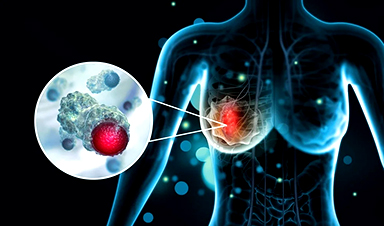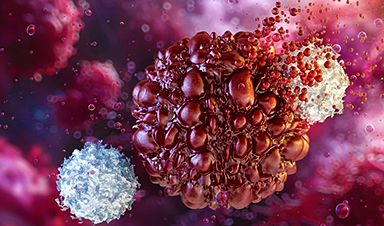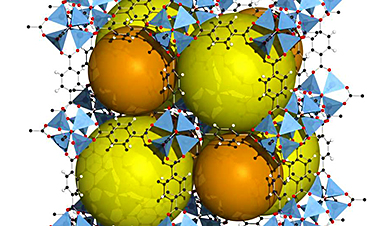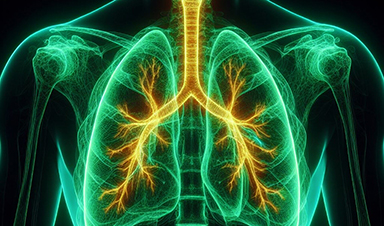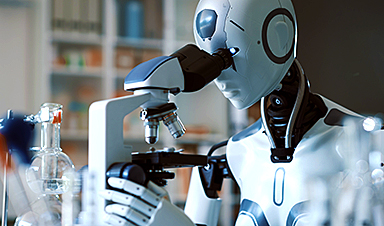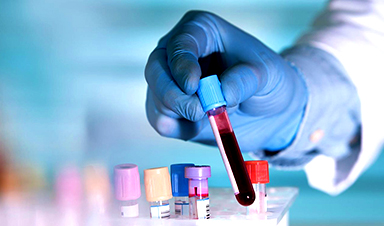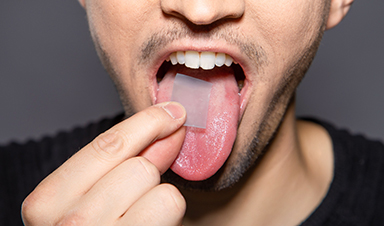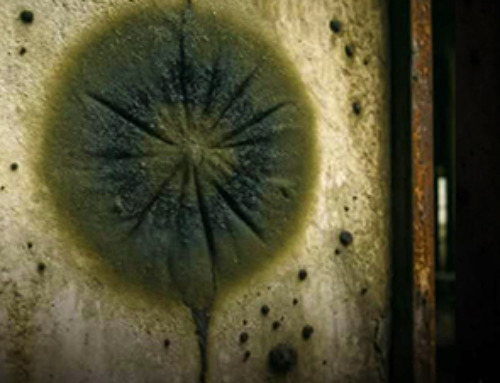In an article recently published in the journal ACS Applied Bio Materials, researchers discussed the utility of neutrophil cell membrane coating of a self-assembly nanoconstruct to enable high specificity for triple-negative breast cancer treatment.
Severity of Breast Cancer
With a 12% lifetime risk for women, breast cancer (BC) continues to be the second most prevalent cancer diagnosed in women in the United States. The majority of treatment for advanced breast cancer, metastatic breast cancer, and triple-negative breast cancer (TNBC) is the systemic injection of chemotherapeutic drugs because there are relatively few foods and drug administration (FDA)-approved medicines for such aggressive forms of the disease. The survival rate of patients was dramatically increased by chemotherapy using cytotoxic drugs. However, because of their non-specific distribution, chemotherapy might cause side effects such as induced neutropenia, cardiotoxicity, peripheral neurotoxicity, and myelosuppression.
Nanotechnology in Medical Treatment
The development of medication delivery systems based on nanotechnology has made considerable advancements in overcoming traditional constraints. Drug delivery methods based on nanoparticles (NP) have significantly advanced the field of cancer treatment.
The reticular endothelial system (RES), which clears these exogenous materials despite their therapeutic benefits, prevents tumor penetration by generating subtherapeutic concentrations in combination with a dense extracellular matrix. The use of artificial cell membranes or cell membranes obtained from nature can be included in synthetic constructs or NPs using the biomimetic NP method, a novel type of nanoplatform.
Numerous Cell Membrane-Coated Nanoparticles
Numerous cell membrane-coated NPs using membranes from platelets and nucleated cells are described in the literature. According to literature findings, NPs with cell membrane (MEM) coatings already actively express their self-markers, enabling them to adhere to tumor cells and locations.
Biomimetic Nanoparticles for the Treatment of Triple Negative Breast Cancer
In this article, the authors discussed developing a biomimetic NP construct with NPs encased in cell membranes that demonstrated a particular affinity for triple-negative breast cancer cells. The team created biomimetic supramolecular nanoconstructs with a core made of poly(vinyl pyrrolidone)-tannic acid (PVP-TA NPs/PVT NPs) and biofunctionalized with neutrophil cell membranes (PVT-NEU NPs). A PVT-NEU NP construct was synthesized, described, and tested in vitro and in vivo for enhanced targeting and therapeutic effects.
The team discussed the possibility of biomimetic NPs as a promising therapeutic choice for targeted medication delivery for advanced-stage breast cancer and other diseases of a similar nature. The creation of a perfect neutrophil-cloaked NP supramolecular construct for improved tumor-targeted administration was described. To find a suitable membrane-cloaked NP construct, various cellular binding interactions, biological tests, and bio-distribution/tumor targeting investigations were demonstrated. An ectopic xenograft tumor, the MDA-MB-231 breast cancer mouse model, was used to confirm the superior anti-tumor efficacy of the neutrophil membrane-cloaked NP construct.
The researchers demonstrated that the inherent membrane features of the proposed NPs, which resulted in improved circulation, self-binding capacity, and recognition/targeting capabilities of the source cells, allowed for successful targeting and tumor delivery overall. Due to cell-specific binding, these nanostructures not only enhanced binding to the initial tumor site but also could target the metastatic tumor.
Biological Characteristics of PVP-TA NPs
The core of PVP-TA NPs coated with activated human neutrophil membranes was present, according to the analysis of PVT-NEU NPs. The study’s findings supported PVTNEU NPs’ increased targeting and engagement with tumor cells, which enhanced a model therapeutic agent’s therapeutic activity. In contrast to PVT NPs, PVT-NEU NPs showed pronounced binding to MDA-MB-231 and MDA-MB-468 cells, while breast epithelial cells, MCF10A, displayed very little internalization, indicating a preference for absorption in cancer cells as opposed to noncancer cells. PTX-loaded PVT NP treatment dramatically reduced the IC50 values compared to unloaded PTX.
Compared to PTX alone in MDA-MB-231, PTX-loaded PVT-NEU NPs demonstrated a substantial change of 2.95-fold reduction. When compared to PVT NPs, PVT-NEU NPs showed significantly greater tumor retention of the ICG dye after 72 hours. PTX solution demonstrated a 52% reduction in tumor growth compared to control mice.
The results of the SDS-PAGE Coomassie stain indicated that LFA-1, MAC-1, PSGL-1, and PECAM-1 could be present. Although PVT-NEU NPs appeared to have fewer proteins than NEU, the presence of membrane proteins showed that these proteins were properly translocated to the surface of PVT NPs. When the NPs were loaded with the fluorescent dye C6, there was a greater uptake of PVTNEU NPs than PVT NPs both intracellularly and in situ.
Conclusions and Future Perspectives
In conclusion, this study described the creation, improvement, and characterization of a biomimetic nanoconstruct that combined cell membrane properties and provided the NPs with a biological identity for treating breast cancer cells.
In a xenograft mouse model, neutrophil membrane-coated nanoconstructs showed tumor retention, enhanced cellular targeting, and relatively less biodistribution in healthy organs. PTX-loaded PVT-NEU NPs showed better anti-migratory, antiproliferative, and anti-colonogenic activities. Comparing this nanoconstruct to uncoated NPs and the natural drug paclitaxel, it decreased systemic toxicity, showed better in vivo therapeutic effect, and good hemocompatibility.
The authors stated that this method of biomimetic-designed nanoconstructs has promise as a drug delivery system with the potential for enhanced therapeutic outcomes, active tumor targeting, and fewer adverse effects compared to traditional chemotherapy for the treatment of breast cancer. They mentioned that the results of this study could be used to inform the design of experiments for the targeted drug delivery to the tumor site for additional disease models with comparable traits.
News
Chernobyl scientists discover black fungus feeding on deadly radiation
It looks pretty sinister, but it might actually be incredibly helpful When reactor number four in Chernobyl exploded, it triggered the worst nuclear disaster in history, one which the surrounding area still has not [...]
Long COVID Is Taking A Silent Toll On Mental Health, Here’s What Experts Say
Months after recovering from COVID-19, many people continue to feel unwell. They speak of exhaustion that doesn’t fade, difficulty breathing, or an unsettling mental haze. What’s becoming increasingly clear is that recovery from the [...]
Study Delivers Cancer Drugs Directly to the Tumor Nucleus
A new peptide-based nanotube treatment sneaks chemo into drug-resistant cancer cells, providing a unique workaround to one of oncology’s toughest hurdles. CiQUS researchers have developed a novel molecular strategy that allows a chemotherapy drug to [...]
Scientists Begin $14.2 Million Project To Decode the Body’s “Hidden Sixth Sense”
An NIH-supported initiative seeks to unravel how the nervous system tracks and regulates the body’s internal organs. How does your brain recognize when it’s time to take a breath, when your blood pressure has [...]
Scientists Discover a New Form of Ice That Shouldn’t Exist
Researchers at the European XFEL and DESY are investigating unusual forms of ice that can exist at room temperature when subjected to extreme pressure. Ice comes in many forms, even when made of nothing but water [...]
Nobel-winning, tiny ‘sponge crystals’ with an astonishing amount of inner space
The 2025 Nobel Prize in chemistry was awarded to Richard Robson, Susumu Kitagawa and Omar Yaghi on Oct. 8, 2025, for the development of metal-organic frameworks, or MOFs, which are tunable crystal structures with extremely [...]
Harnessing Green-Synthesized Nanoparticles for Water Purification
A new review reveals how plant- and microbe-derived nanoparticles can power next-gen water disinfection, delivering cleaner, safer water without the environmental cost of traditional treatments. A recent review published in Nanomaterials highlights the potential of green-synthesized nanomaterials (GSNMs) in [...]
Brainstem damage found to be behind long-lasting effects of severe Covid-19
Damage to the brainstem - the brain's 'control center' - is behind long-lasting physical and psychiatric effects of severe Covid-19 infection, a study suggests. Using ultra-high-resolution scanners that can see the living brain in [...]
CT scan changes over one year predict outcomes in fibrotic lung disease
Researchers at National Jewish Health have shown that subtle increases in lung scarring, detected by an artificial intelligence-based tool on CT scans taken one year apart, are associated with disease progression and survival in [...]
AI Spots Hidden Signs of Disease Before Symptoms Appear
Researchers suggest that examining the inner workings of cells more closely could help physicians detect diseases earlier and more accurately match patients with effective therapies. Researchers at McGill University have created an artificial intelligence tool capable of uncovering [...]
Breakthrough Blood Test Detects Head and Neck Cancer up to 10 Years Before Symptoms
Mass General Brigham’s HPV-DeepSeek test enables much earlier cancer detection through a blood sample, creating a new opportunity for screening HPV-related head and neck cancers. Human papillomavirus (HPV) is responsible for about 70% of [...]
Study of 86 chikungunya outbreaks reveals unpredictability in size and severity
The symptoms come on quickly—acute fever, followed by debilitating joint pain that can last for months. Though rarely fatal, the chikungunya virus, a mosquito-borne illness, can be particularly severe for high-risk individuals, including newborns and older [...]
Tiny Fat Messengers May Link Obesity to Alzheimer’s Plaque Buildup
Summary: A groundbreaking study reveals how obesity may drive Alzheimer’s disease through tiny messengers called extracellular vesicles released from fat tissue. These vesicles carry lipids that alter how quickly amyloid-β plaques form, a hallmark of [...]
Ozone exposure weakens lung function and reshapes the oral microbiome
Scientists reveal that short-term ozone inhalation doesn’t just harm the lungs; it reshapes the microbes in your mouth, with men facing the greatest risks. Ozone is a toxic environmental pollutant with wide-ranging effects on [...]
New study reveals molecular basis of Long COVID brain fog
Even though many years have passed since the start of the COVID-19 pandemic, the effects of infection with SARS-CoV-2 are not completely understood. This is especially true for Long COVID, a chronic condition that [...]
Scientists make huge Parkinson’s breakthrough as they discover ‘protein trigger’
Scientists have, for the first time, directly visualised the protein clusters in the brain believed to trigger Parkinson's disease, bringing them one step closer to potential treatments. Parkinson's is a progressive incurable neurological disorder [...]
